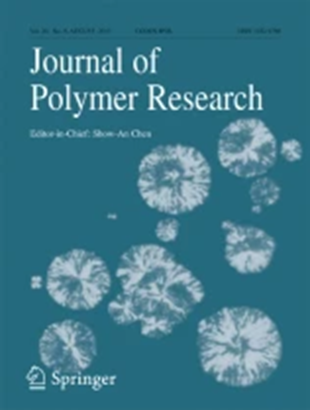Development of polypyrrole micro-rods onto polyester fabric via template-free hybrid polymerization approach
Abstract
Electrically conducting polymer-supported smart and intelligent textiles have attracted a huge attention because of their exceptional properties in terms of flexibility, light-weight, electrical conductivity, and sensing behavior. The present study claims an innovative combination of vapor phase polymerization and electrochemical polymerization processes to grow micro-rods of polypyrrole onto the surface of a polyester fabric. The results of physicochemical parameters revealed that the vapor phase polymerization brought down the electrical resistance of the fabric from 200 × 109 Ω to 220 Ω in just 3 min. Interestingly, the integration of electrochemical polymerization to the vapor phase polymerization helped in lowering the resistance of electro-conductive fabric along with the development of polypyrrole micro-rods simultaneously. FTIR and FE-SEM analyses confirmed the existence of active functional sites and the building up the micro-rods of 0.42 μm thickness onto the fabric surface. The V-I characteristics of the polypyrrole-coated electro-conductive fabric exhibited an almost linear increase in current while the resistance to rinsing showed high physical adherence of the polypyrrole coating to the fabric surface. Moreover, the interactive mechanism established the formation and the interaction of pyrrole’s hair-like micro-rods onto the polyester fabric surface. The as prepared electrochemical polymerized fabic was tested for the sensing of ammonia gas which showed significant sensing bahavior of ammonia at ppm level. Thus, the obtained significant surface resistance value (70 Ω) of pyrrole-polymerized polyester fabric makes it an outstanding candidate for sensing application on an industrial scale.

 求助内容:
求助内容: 应助结果提醒方式:
应助结果提醒方式:


